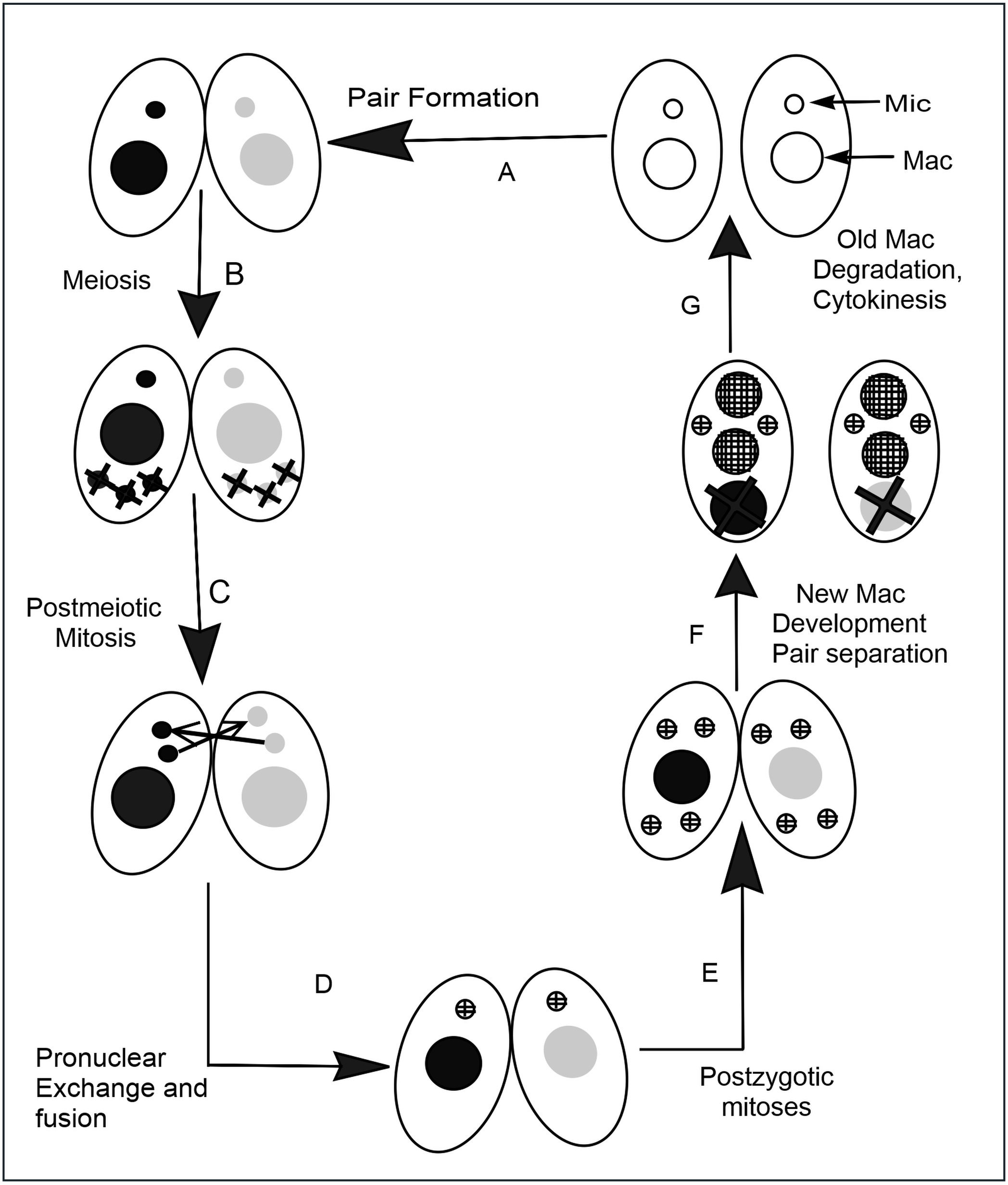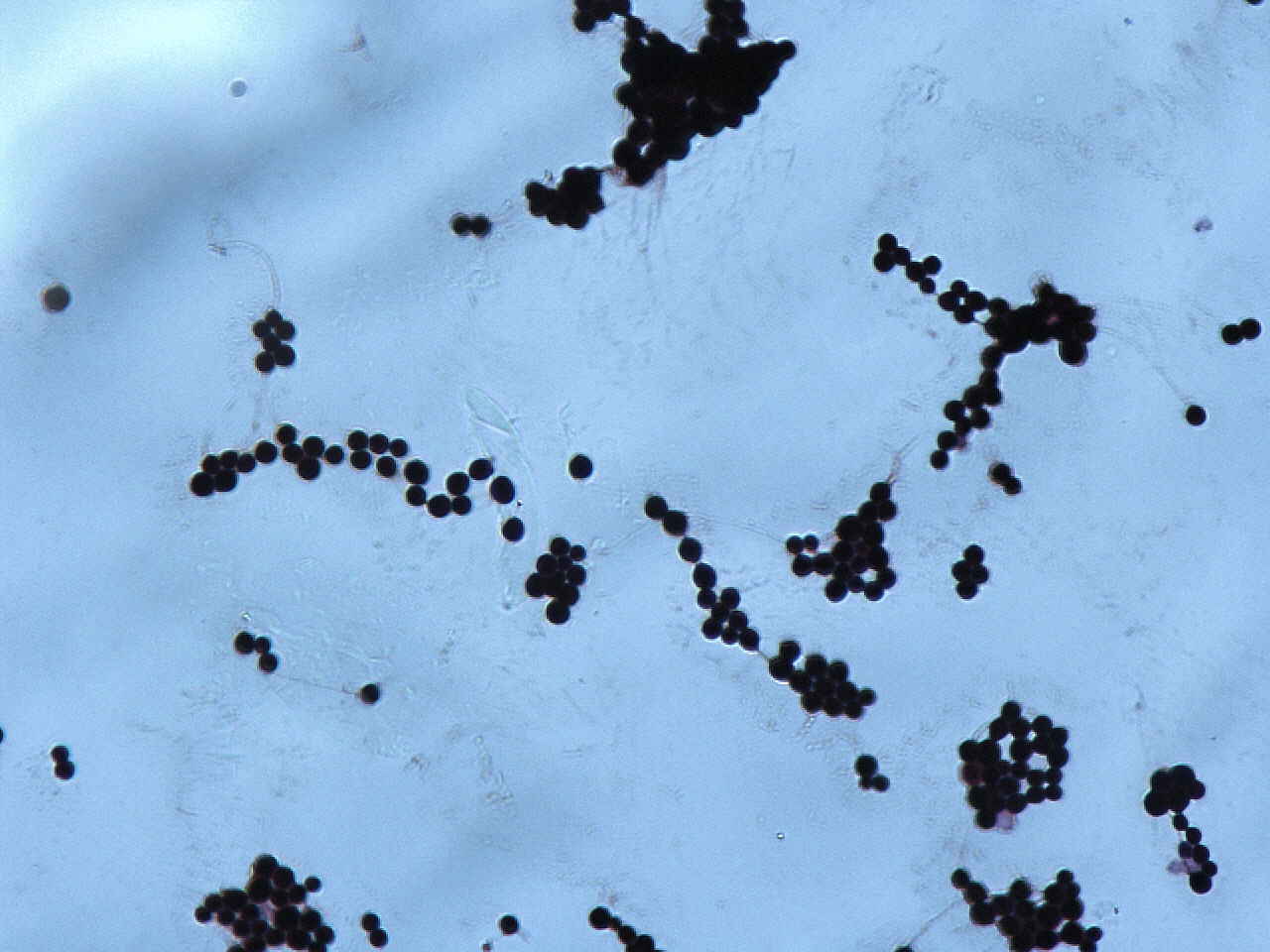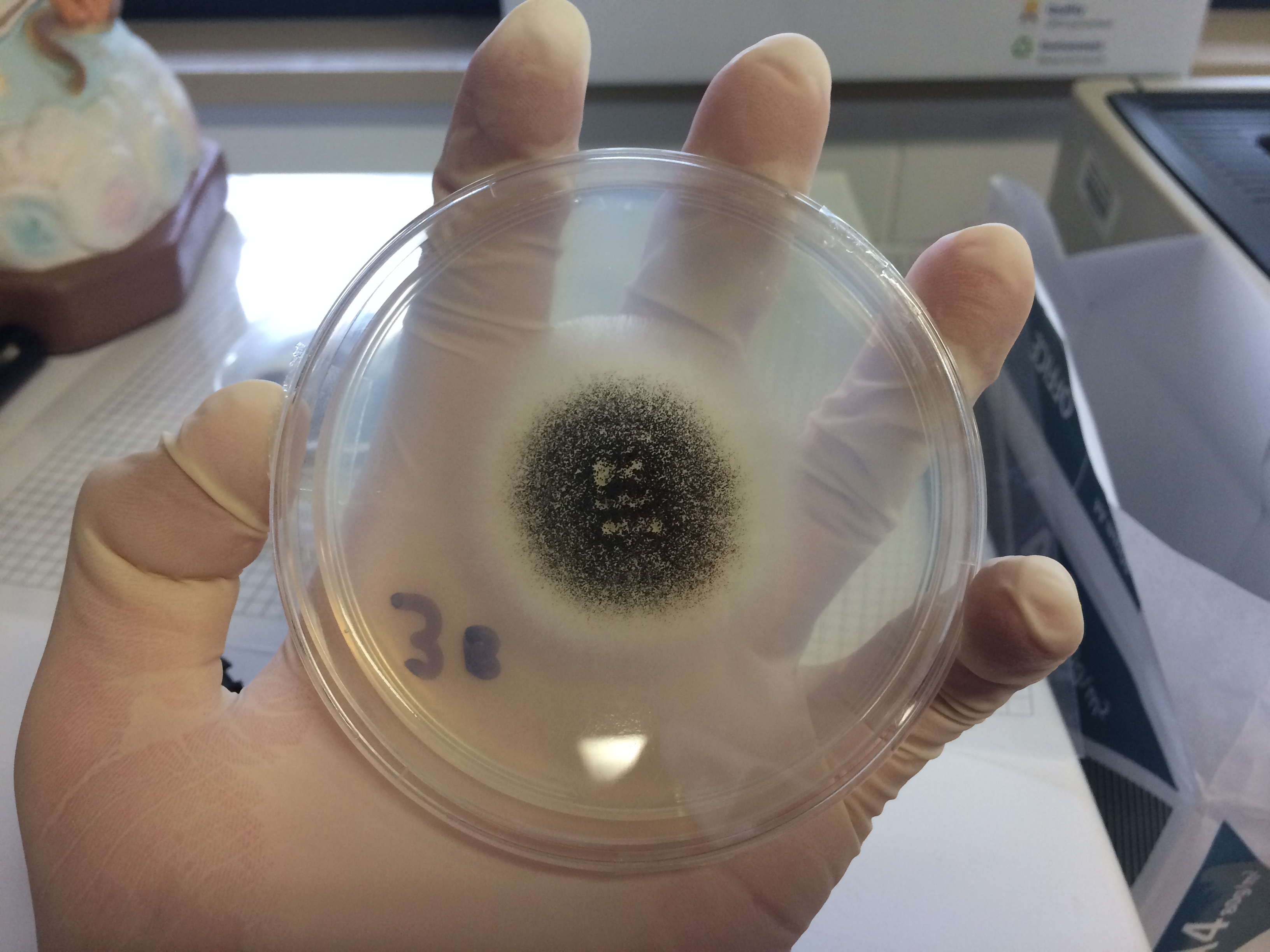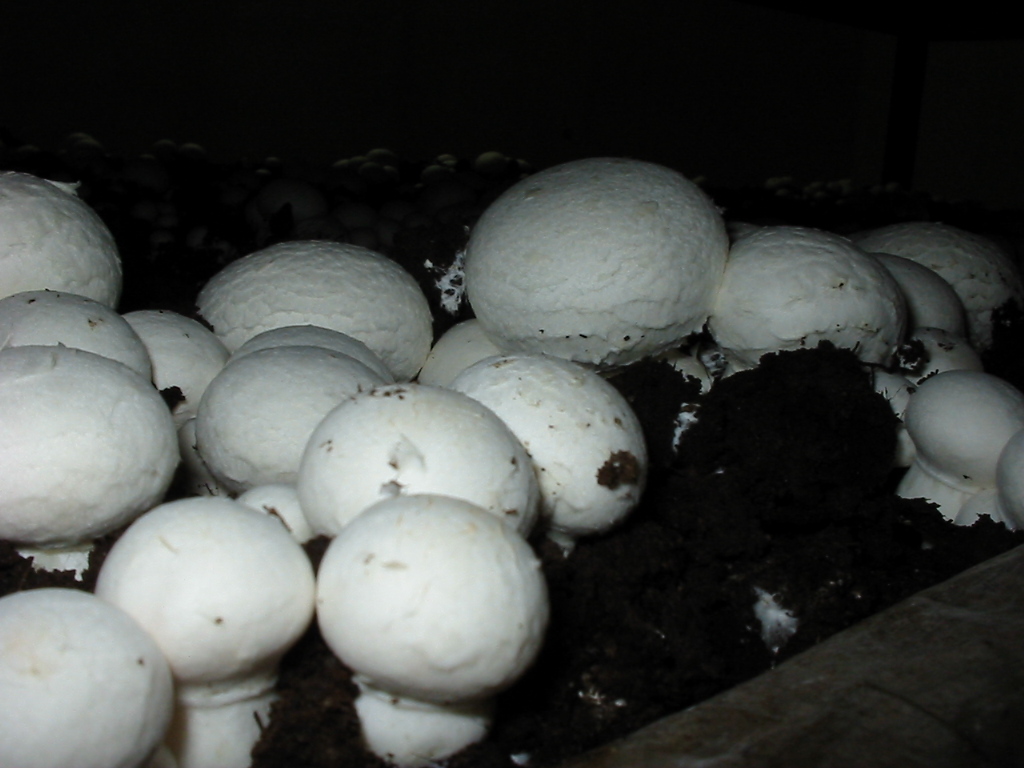|
Gene Density
In genetics, the gene density of an organism's genome is the ratio of the number of genes per number of base pairs, usually written in terms of a million base pairs, or ''megabase'' (Mb). The human genome has a gene density of 11-15 genes/Mb, while the genome of the C. elegans roundworm is estimated to have 200. Seemingly simple organisms, such as bacteria and amoebas, have a much higher gene density than humans. Bacterial DNA has a gene density on the order of 500-1000 genes/Mb. This is due several factors, including that the fact that bacterial DNA has no introns. There are also fewer codons in bacterial genes. Species protozoa fungi plants invertebrate vertebrate non-mammals vertebrate mammals Gene count is calculated by the number of gene flags in the latest version of a given species gtf annotation file. Bear in mind that well studied organisms will probably have higher gene counts because these species have better annotation, therefore these numbers ... [...More Info...] [...Related Items...] OR: [Wikipedia] [Google] [Baidu] |
Genetics
Genetics is the study of genes, genetic variation, and heredity in organisms.Hartl D, Jones E (2005) It is an important branch in biology because heredity is vital to organisms' evolution. Gregor Mendel, a Moravian Augustinian friar working in the 19th century in Brno, was the first to study genetics scientifically. Mendel studied "trait inheritance", patterns in the way traits are handed down from parents to offspring over time. He observed that organisms (pea plants) inherit traits by way of discrete "units of inheritance". This term, still used today, is a somewhat ambiguous definition of what is referred to as a gene. Trait inheritance and molecular inheritance mechanisms of genes are still primary principles of genetics in the 21st century, but modern genetics has expanded to study the function and behavior of genes. Gene structure and function, variation, and distribution are studied within the context of the cell, the organism (e.g. dominance), and within the ... [...More Info...] [...Related Items...] OR: [Wikipedia] [Google] [Baidu] |
Tetrahymena
''Tetrahymena'', a Unicellular organism, unicellular eukaryote, is a genus of free-living ciliates. The genus Tetrahymena is the most widely studied member of its phylum. It can produce, store and react with different types of hormones. Tetrahymena cells can recognize both related and hostile cells. They can also switch from commensalism, commensalistic to pathogenic modes of survival. They are common in freshwater lakes, ponds, and streams. ''Tetrahymena'' species used as model organisms in biomedical research are ''T. thermophila'' and ''T. pyriformis''. ''T. thermophila'': a model organism in experimental biology As a ciliated protozoan, ''Tetrahymena thermophila'' exhibits nuclear dimorphism: two types of cell Cell nucleus, nuclei. They have a bigger, Somatic cell, non-germline macronucleus and a small, germline micronucleus in each cell at the same time and these two carry out different functions with distinct cytological and biological properties. This unique vers ... [...More Info...] [...Related Items...] OR: [Wikipedia] [Google] [Baidu] |
Kluyveromyces Lactis
''Kluyveromyces lactis'' is a ''Kluyveromyces'' yeast commonly used for genetic studies and industrial applications. Its name comes from the ability to assimilate lactose and convert it into lactic acid. ''Kluyveromyces lactis'' (formerly ''Saccharomyces lactis'') is a yeast which has the ability to assimilate lactose and convert it into lactic acid. ''K. lactis'' and other organisms i.e., ''Aspergillus niger'' var awamori and ''Escherichia coli'' K-12 are grown in fermenters to produce chymosin ( rennet) on a commercial scale; this rennet, which replaces the conventional form obtained from slaughtered animals, is now widely used in cheese production. Yeasts and fungi are ideal organisms for comparative genomic studies in eukaryotes because of their small and compact genomes and because they include a number of species such as ''Neurospora crassa'', ''Saccharomyces cerevisiae'' and ''Schizosaccharomyces pombe'', that have been, and continue to be, used extensively in genetic st ... [...More Info...] [...Related Items...] OR: [Wikipedia] [Google] [Baidu] |
Fusarium Oxysporum
''Fusarium oxysporum'' (Schlecht as emended by Snyder and Hansen), an ascomycete fungus, comprises all the species, varieties and forms recognized by Wollenweber and Reinking within an infrageneric grouping called section Elegans. It is part of the family Nectriaceae. Although their predominant role in native soils may be as harmless or even beneficial plant endophytes or soil saprophytes, many strains within the ''F. oxysporum'' complex are soil borne pathogens of plants, especially in agricultural settings. Taxonomy While the species, as defined by Snyder and Hansen, has been widely accepted for more than 50 years, more recent work indicates this taxon is actually a genetically heterogeneous polytypic morphospecies, whose strains represent some of the most abundant and widespread microbes of the global soil microflora. Genome The ' family of transposable elements was first discovered by Daboussi ''et al.'', 1992 in several ''formae speciales'' and Davière ''et al.'', 2001 ... [...More Info...] [...Related Items...] OR: [Wikipedia] [Google] [Baidu] |
Eremothecium Gossypii
(also known as Ashbya gossypii) is a filamentous fungus or mold closely related to yeast, but growing exclusively in a filamentous way. It was originally isolated from cotton as a pathogen causing stigmatomycosis by Ashby and Nowell in 1926. This disease affects the development of hair cells in cotton bolls and can be transmitted to citrus fruits, which thereupon dry out and collapse (dry rot disease). In the first part of the 20th century, and two other fungi causing stigmatomycosis (, ) made it virtually impossible to grow cotton in certain regions of the subtropics, causing severe economical losses. Control of the spore-transmitting insects cotton stainer() and - permitted full eradication of infections. was recognized as a natural overproducer of riboflavin (vitamin B2), which protects its spores against ultraviolet light. This made it an interesting organism for industries, where genetically modified strains are still used to produce this vitamin. as a model organism ... [...More Info...] [...Related Items...] OR: [Wikipedia] [Google] [Baidu] |
Encephalitozoon Cuniculi
''Encephalitozoon cuniculi'' (''E. cuniculi'') is a mammalian microsporidial pathogen with world-wide distribution. An important cause of neurologic and renal disease in rabbits, ''E. cuniculi'' can also cause disease in immunocompromised people. Classification and cell structure ''E. cuniculi'' is a spore-forming unicellular parasite belonging to the phylum Microsporidia. Microsporidia are obligate intracellular parasitic fungi infecting many animal groups. Lacking mitochondria and peroxysomes, these unicellular eukaryotes were first considered a deeply branching protist lineage that diverged before the endosymbiotic event that led to mitochondria. The discovery of a gene for a mitochondrial-type chaperone combined with molecular phylogenetic data later implied that microsporidia are atypical fungi that lost mitochondria during evolution. Genome The genome consists of approximately 2.9-megabases (Mbs) in 11 chromosomes, with a total of 1,997 potential protein-coding gen ... [...More Info...] [...Related Items...] OR: [Wikipedia] [Google] [Baidu] |
Debaryomyces Hansenii
''Debaryomyces hansenii'' is a species of yeast in the family Saccharomycetaceae. Also known as ''Candida famata'', it accounts for up to 2% of invasive candidiasis cases. Ecology ''Debaryomyces hansenii'' is an osmo-, halo- and xerotolerant yeast that produces toxins, including mycocins, to destroy competitive yeast species. It is a common species in all types of cheese, including soft cheeses and the brines of semi-hard and hard cheeses, and the most common yeast among 383 isolates from samples of unsulphited or sulphited sausages, skinless sausages and minced beef. It contributes to the fermentation of barrel-aged beers such as Le Coq Imperial Stout from Harveys Brewery in southern England. Harvey's head brewer speculates that it is either airborne in the brewery or a slow-growing component of their house yeast blend. ''D. hansenii'' is also found in hyper-saline waters such as the salterns on the Atlantic coast of Namibia or in the Great Salt Lake of Utah. Nutritional ... [...More Info...] [...Related Items...] OR: [Wikipedia] [Google] [Baidu] |
Cryptococcus Neoformans
''Cryptococcus neoformans'' is an encapsulated yeast belonging to the class Tremellomycetes and an obligate aerobe that can live in both plants and animals. Its teleomorph is a filamentous fungus, formerly referred to ''Filobasidiella neoformans''. In its yeast state, it is often found in bird excrement. ''Cryptococcus neoformans'' can cause disease in apparently immunocompetent, as well as immunocompromised, hosts. Classification ''Cryptococcus neoformans'' has undergone numerous nomenclature revisions since its first description in 1895. It formerly contained two varieties: ''C. neoformans ''var.'' neoformans'' and ''C. neoformans '' var.'' grubii''. A third variety, ''C. neoformans ''var.'' gattii'', was later defined as a distinct species, ''Cryptococcus gattii''. The most recent classification system divides these varieties into seven species. ''C. neoformans'' refers to ''C. neoformans '' var.'' grubii''. A new species name, ''Cryptococcus deneoformans'', is used for the f ... [...More Info...] [...Related Items...] OR: [Wikipedia] [Google] [Baidu] |
Candida Albicans
''Candida albicans'' is an opportunistic pathogenic yeast that is a common member of the human gut flora. It can also survive outside the human body. It is detected in the gastrointestinal tract and mouth in 40–60% of healthy adults. It is usually a commensal organism, but it can become pathogenic in immunocompromised individuals under a variety of conditions. It is one of the few species of the genus '' Candida'' that causes the human infection candidiasis, which results from an overgrowth of the fungus. Candidiasis is, for example, often observed in HIV-infected patients. ''C. albicans'' is the most common fungal species isolated from biofilms either formed on (permanent) implanted medical devices or on human tissue. ''C. albicans'', ''C. tropicalis'', ''C. parapsilosis'', and ''C. glabrata'' are together responsible for 50–90% of all cases of candidiasis in humans. A mortality rate of 40% has been reported for patients with systemic candidiasis due to ''C. albicans''. ... [...More Info...] [...Related Items...] OR: [Wikipedia] [Google] [Baidu] |
Aspergillus Niger
''Aspergillus niger'' is a mold classified within the ''Nigri'' section of the ''Aspergillus'' genus. The ''Aspergillus'' genus consists of common molds found throughout the environment within soil and water, on vegetation, in fecal matter, on decomposing matter, and suspended in the air. Species within this genus often grow quickly and can sporulate within a few days of germination. A combination of characteristics unique to ''A. niger'' makes the microbe invaluable to the production of many acids, proteins and bioactive compounds. Characteristics including extensive metabolic diversity, high production yield, secretion capability, and the ability to conduct post-translational modifications are responsible for ''A. niger's'' robust production of secondary metabolites. ''A. niger's'' capability to withstand extremely acidic conditions makes it especially important to the industrial production of citric acid. ''A. niger'' causes a disease known as "black mold" on certain fruits an ... [...More Info...] [...Related Items...] OR: [Wikipedia] [Google] [Baidu] |
Aspergillus Nidulans
''Aspergillus nidulans'' (also called ''Emericella nidulans'' when referring to its sexual form, or teleomorph) is one of many species of filamentous fungi in the phylum Ascomycota. It has been an important research organism for studying eukaryotic cell biology for over 50 years, being used to study a wide range of subjects including recombination, DNA repair, mutation, cell cycle control, tubulin, chromatin, nucleokinesis, pathogenesis, metabolism, and experimental evolution. It is one of the few species in its genus able to form sexual spores through meiosis, allowing crossing of strains in the laboratory. ''A. nidulans'' is a homothallic fungus, meaning it is able to self-fertilize and form fruiting bodies in the absence of a mating partner. It has septate hyphae with a woolly colony texture and white mycelia. The green colour of wild-type colonies is due to pigmentation of the spores, while mutations in the pigmentation pathway can produce other spore colours. Genome The ' ... [...More Info...] [...Related Items...] OR: [Wikipedia] [Google] [Baidu] |
Agaricus Bisporus
''Agaricus bisporus'' is an edible basidiomycete mushroom native to grasslands in Eurasia and North America. It has two color states while immature – white and brown – both of which have various names, with additional names for the mature state. ''A. bisporus'' is cultivated in more than seventy countries and is one of the most commonly and widely consumed mushrooms in the world. Names When immature and , this mushroom may be known as: * common mushroom * white mushroom * button mushroom * cultivated mushroom * table mushroom * champignon ( French for mushroom) When immature and , it may be known variously as: * Swiss brown mushroom * Roman brown mushroom * Italian brown mushroom * cremini/crimini mushroom * chestnut mushroom (not to be confused with '' Pholiota adiposa'') * baby bella When marketed in its mature state, the mushroom is brown with a cap measuring . This form is commonly sold under the names portobello, portabella, or portobella; the etymology is dispute ... [...More Info...] [...Related Items...] OR: [Wikipedia] [Google] [Baidu] |





